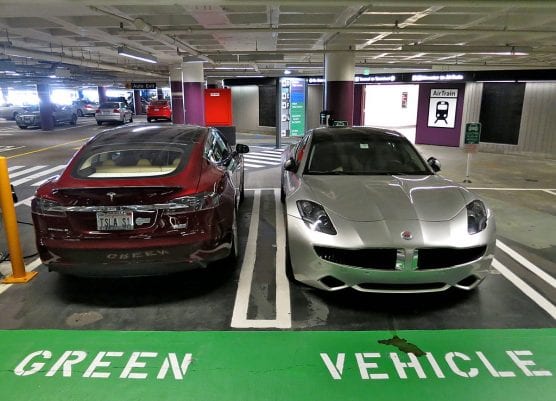By Nick Cahill
SACRAMENTO – Over the last two decades, California lawmakers from both sides of the aisle have teamed up to create some of the strictest clean air and energy standards in the world. The scheme to fight smog and convince residents to ditch gas guzzlers, led by former Gov. Arnold Schwarzenegger and current Gov. Jerry Brown, promises to protect the Golden State from future climate change impacts.
With the wide-ranging assortment of climate laws now in effect and more to be hatched, state financial experts are imploring the Legislature to pause and figure out whether the push for clean cars is actually economical.
“The overall effects of the state’s policies aimed at reducing transportation greenhouse gas emissions – both positive and negative – are largely unclear,” said the state’s nonpartisan legislative analyst in a report Friday. “The amount and quality of available information about each major program varies significantly but, in many cases, the available research on major effects is limited.”
In a pair of reports titled “Assessing California’s Climate Policies,” the independent research office says the state should develop a “robust” method to evaluate the myriad laws aimed at cutting greenhouse gas emissions. The studies dissect the state’s various methods to reduce transportation emissions as well as its landmark cap-and-trade business tax system.
While California has slashed total greenhouse gas emissions in recent years largely because utilities are committing to clean energy, transportation emissions have actually increased. Californians are driving more and tailpipe exhaust from cars and heavy-duty vehicles continues to make up the largest piece of the state’s pollution pie, followed by the industrial sector and electricity producers.
California’s approach to clean up the transportation sector is to reduce emissions from both cars and heavy-duty vehicles, increase the use of lower-carbon fuels and reduce the number of miles traveled.
According to Mac Taylor, who is retiring as lead analyst this month, it’s difficult to accurately gauge whether the approaches as construed are effective.
“The amount and quality of available information about each major program varies significantly, but, in many cases, the available research on major effects is limited. Most notably, there are very few retrospective analyses – conducted by outside researchers or state agencies – that isolate the effects of each policy from other important factors such as economic conditions and other policies,” Taylor’s report states.
He recommends the Legislature pursue more independent reviews of the various state climate programs and require state agencies to conduct retrospective reports after programs are implemented.
Another focal point of California’s climate change policy is its cap-and-trade system, which was extended through 2030 by Gov. Brown in 2017. Brown called the extension a “key milestone” and was joined by Schwarzenegger – who signed the original cap-and-trade bill – during the signing ceremony.
The lucrative system sets a cap on the emissions businesses can emit and allows heavy polluters to buy permits from other companies in order to skirt the limit. The permits are sold at auctions and the proceeds are supposed to go toward clean air programs and related infrastructure projects. Since 2012, permit auctions have generated $9.4 billion for the state’s coffers, according to the latest update.
Taylor says that using the business tax to cut greenhouse gas emissions could be more effective than the transportation-specific options.
“The state’s transportation‑specific policies are generally much more costly ways to reduce emissions than carbon pricing policies, such as cap‑and‑trade. As a result, the Legislature might want to consider relying more heavily on cap‑and‑trade to achieve low‑cost greenhouse gas emissions reductions,” the report adds.
If California can make its policies easier to evaluate and more transparent, Taylor says the climate change blueprint could “spill over” to other states and countries.
Like this:
Like Loading...
Related





 Tweet This
Tweet This Facebook
Facebook Digg This
Digg This Bookmark
Bookmark Stumble
Stumble RSS
RSS


























REAL NAMES ONLY: All posters must use their real individual or business name. This applies equally to Twitter account holders who use a nickname.
0 Comments
You can be the first one to leave a comment.